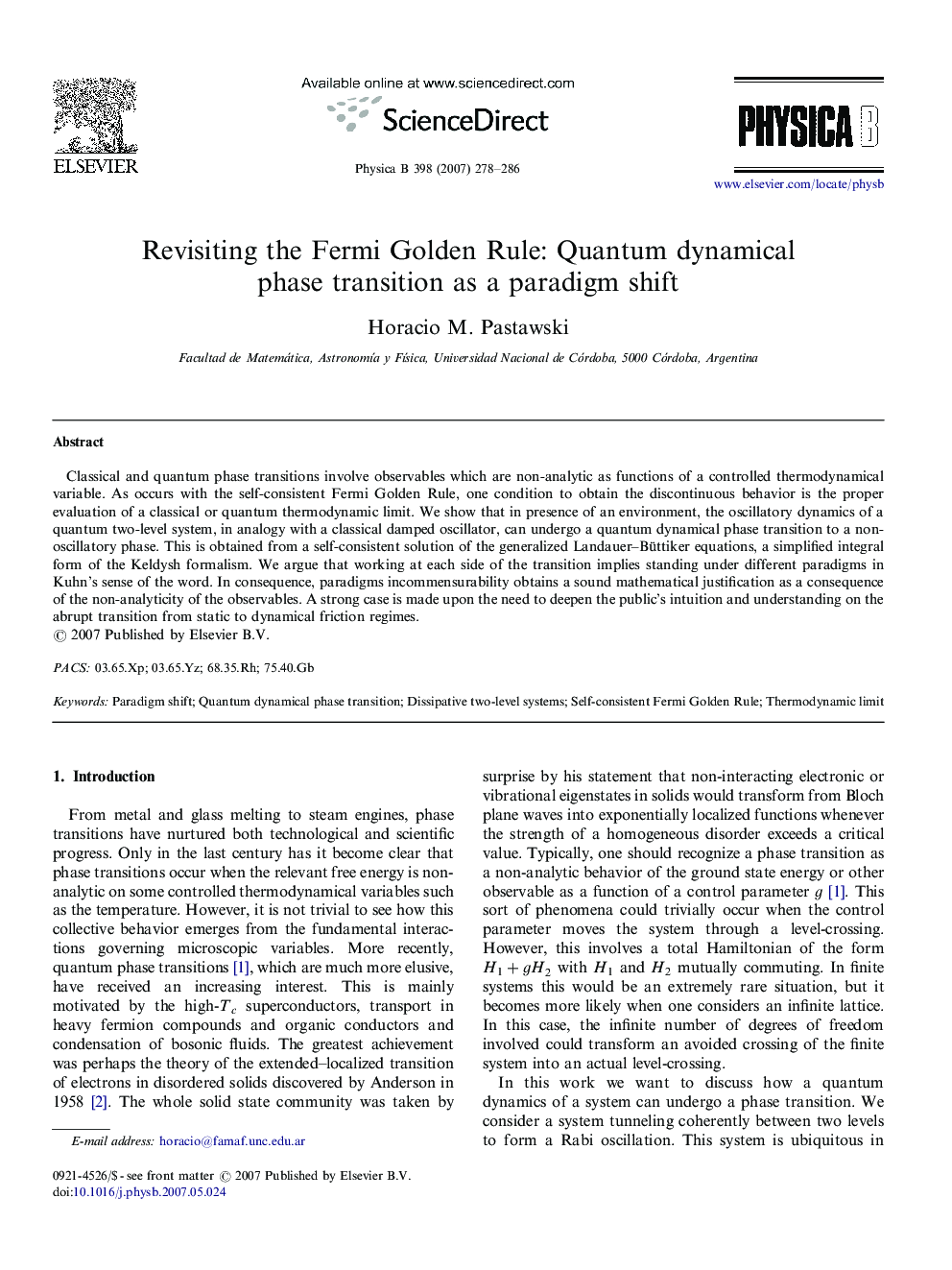| Article ID | Journal | Published Year | Pages | File Type |
|---|---|---|---|---|
| 1815352 | Physica B: Condensed Matter | 2007 | 9 Pages |
Classical and quantum phase transitions involve observables which are non-analytic as functions of a controlled thermodynamical variable. As occurs with the self-consistent Fermi Golden Rule, one condition to obtain the discontinuous behavior is the proper evaluation of a classical or quantum thermodynamic limit. We show that in presence of an environment, the oscillatory dynamics of a quantum two-level system, in analogy with a classical damped oscillator, can undergo a quantum dynamical phase transition to a non-oscillatory phase. This is obtained from a self-consistent solution of the generalized Landauer–Büttiker equations, a simplified integral form of the Keldysh formalism. We argue that working at each side of the transition implies standing under different paradigms in Kuhn's sense of the word. In consequence, paradigms incommensurability obtains a sound mathematical justification as a consequence of the non-analyticity of the observables. A strong case is made upon the need to deepen the public's intuition and understanding on the abrupt transition from static to dynamical friction regimes.
